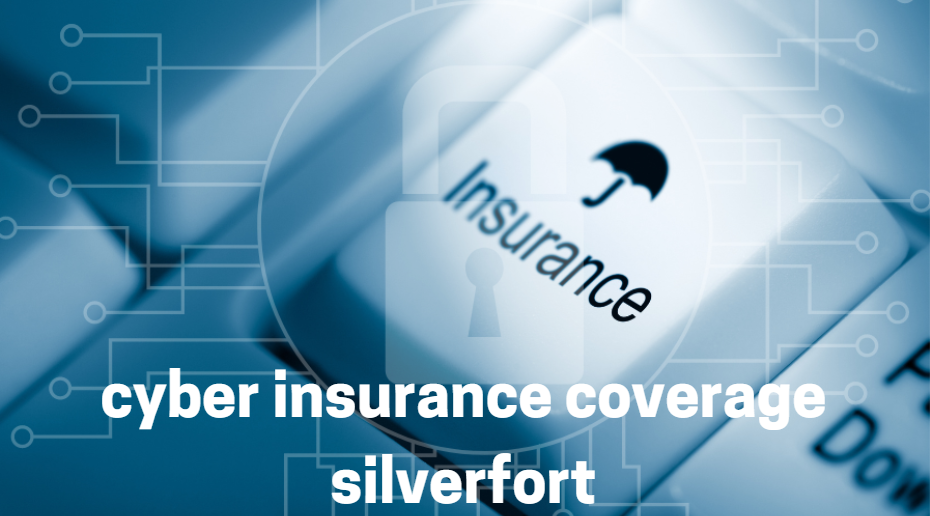Contents
- 1 Introduction
- 2 Understanding Cyber Insurance
- 3 The Role of Silverfort in Cyber Insurance
- 4 Benefits of Using Silverfort for Cyber Insurance
- 5 Case Studies: Silverfort in Action
- 6 Future Trends in Cyber Insurance and Silverfort’s Role
- 7 FAQs About Cyber Insurance Coverage with Silverfort
- 7.1 What is the role of Silverfort in enhancing cyber insurance coverage?
- 7.2 How does Silverfort’s MFA implementation differ from traditional MFA solutions?
- 7.3 Can Silverfort’s solutions be integrated with existing security infrastructures?
- 7.4 What are the cost benefits of using Silverfort for cyber insurance coverage?
- 7.5 How does Silverfort support compliance with future cyber insurance policies?
- 8 Conclusion
Introduction
In today’s digital age, cyber insurance has become an essential safeguard for businesses. With the rising frequency of cyberattacks, companies must protect their digital assets and ensure compliance with stringent cyber insurance policies.
Silverfort, a leading cybersecurity company, plays a pivotal role in enhancing cyber insurance coverage by meeting extended Multi-Factor Authentication (MFA) requirements. This article delves deep into the importance of cyber insurance, the role of Silverfort, and how businesses in the USA can leverage Silverfort’s solutions for comprehensive cyber insurance coverage.
Understanding Cyber Insurance
What is Cyber Insurance?
Cyber insurance, also known as cyber liability insurance, is a policy designed to help organizations mitigate the financial risks associated with cyber incidents. These incidents can range from data breaches and ransomware attacks to business interruptions caused by IT failures. Cyber insurance policies typically cover a variety of costs, including:
- Data breach response: Costs associated with notifying affected individuals, credit monitoring services, and legal fees.
- Business interruption: Compensation for lost income and additional expenses incurred during the recovery period.
- Cyber extortion: Payments demanded by hackers in ransomware attacks.
- Legal fees and fines: Costs related to legal defense, settlements, and regulatory fines.
Why is Cyber Insurance Important?
Cyber insurance is crucial for businesses of all sizes due to the increasing sophistication and frequency of cyber threats. A single cyber incident can result in significant financial losses, reputational damage, and legal repercussions. Cyber insurance provides a financial safety net, ensuring that businesses can recover swiftly and continue operations after a cyberattack.
Key Components of Cyber Insurance Policies
Cyber insurance policies vary widely, but common components include:
- First-party coverage: Covers direct losses incurred by the insured business, such as data restoration, business interruption, and cyber extortion.
- Third-party coverage: Covers legal liabilities to third parties, including customers and partners, resulting from a cyber incident.
- Regulatory coverage: Covers fines and penalties imposed by regulatory bodies due to non-compliance with data protection laws.
The Role of Silverfort in Cyber Insurance
Overview of Silverfort
Silverfort is a cybersecurity company that specializes in providing unified identity protection across both on-premises and cloud environments. By leveraging its innovative technology, Silverfort ensures comprehensive protection against identity-based attacks, which are a common entry point for cybercriminals.
Meeting Extended MFA Requirements
One of the critical requirements of modern cyber insurance policies is the implementation of Multi-Factor Authentication (MFA). MFA adds an extra layer of security by requiring users to provide two or more verification factors to access resources. Silverfort ensures full compliance with the new extended MFA requirements of cyber insurance policies by enabling MFA for all on-prem and cloud resources.
How Silverfort Enhances Cyber Insurance Coverage
Silverfort enhances cyber insurance coverage in several ways:
- Comprehensive MFA Implementation: Silverfort enables MFA for all access points, including legacy systems, proprietary applications, and IT infrastructure that do not natively support MFA. This comprehensive implementation significantly reduces the risk of unauthorized access.
- Continuous Monitoring and Analytics: Silverfort provides continuous monitoring and advanced analytics to detect and respond to suspicious activities in real-time. This proactive approach helps prevent breaches and minimizes potential damage.
- Seamless Integration: Silverfort’s platform seamlessly integrates with existing security infrastructures, allowing businesses to enhance their security posture without disrupting operations.
- Scalability: Silverfort’s solutions are scalable, making them suitable for businesses of all sizes. As companies grow, Silverfort ensures that their security measures remain robust and effective.
Benefits of Using Silverfort for Cyber Insurance
Enhanced Compliance
By using Silverfort, businesses can ensure full compliance with the stringent MFA requirements of modern cyber insurance policies. This compliance not only reduces the risk of cyber incidents but also ensures that businesses remain eligible for comprehensive insurance coverage.
Reduced Risk of Cyber Incidents
Silverfort’s unified identity protection platform significantly reduces the risk of identity-based attacks, which are a common entry point for cybercriminals. By preventing unauthorized access, Silverfort helps businesses avoid costly data breaches and other cyber incidents.
Improved Incident Response
In the event of a cyber incident, Silverfort’s continuous monitoring and real-time analytics enable businesses to respond swiftly and effectively. This rapid response can minimize the damage caused by cyberattacks and ensure a quicker recovery.
Cost Savings
Implementing comprehensive MFA and advanced monitoring with Silverfort can lead to cost savings in the long run. By preventing breaches and ensuring compliance with cyber insurance policies, businesses can avoid the financial losses associated with cyber incidents and potential insurance premium increases.
Case Studies: Silverfort in Action
Case Study 1: Financial Services Company
A mid-sized financial services company implemented Silverfort’s unified identity protection platform to enhance its cybersecurity measures. By enabling MFA across all on-prem and cloud resources, the company ensured compliance with its cyber insurance policy requirements. This implementation not only reduced the risk of unauthorized access but also provided continuous monitoring and real-time threat detection. As a result, the company experienced a significant reduction in cyber incidents and maintained its comprehensive cyber insurance coverage.
Case Study 2: Healthcare Organization
A healthcare organization faced challenges in securing its legacy systems and proprietary applications that did not support native MFA. By deploying Silverfort, the organization was able to enable MFA for all access points, ensuring compliance with the extended MFA requirements of its cyber insurance policy.
Silverfort’s seamless integration with the existing security infrastructure allowed the organization to enhance its security measures without disrupting operations. This proactive approach resulted in improved security and maintained eligibility for comprehensive cyber insurance coverage.
Future Trends in Cyber Insurance and Silverfort’s Role
Increasing Importance of MFA
As cyber threats continue to evolve, the importance of MFA in cyber insurance policies will only grow. Insurers are likely to impose more stringent MFA requirements to mitigate the risks associated with identity-based attacks. Silverfort’s comprehensive MFA solutions position it as a critical player in helping businesses meet these requirements.
Rise of Zero Trust Security Models
The Zero Trust security model, which assumes that threats could exist both inside and outside the network, is gaining traction. Silverfort’s unified identity protection platform aligns with the principles of Zero Trust by ensuring that all access points are secured with MFA and continuous monitoring. This alignment enhances the security posture of businesses and supports compliance with future cyber insurance policies.
Advanced Threat Detection and Response
The future of cybersecurity will see a greater emphasis on advanced threat detection and response capabilities. Silverfort’s real-time analytics and continuous monitoring provide businesses with the tools needed to detect and respond to threats swiftly. These capabilities will become increasingly important in meeting the evolving requirements of cyber insurance policies.
FAQs About Cyber Insurance Coverage with Silverfort
What is the role of Silverfort in enhancing cyber insurance coverage?
Silverfort ensures full compliance with the extended MFA requirements of cyber insurance policies by enabling MFA for all on-prem and cloud resources. It also provides continuous monitoring and real-time analytics to detect and respond to threats, reducing the risk of cyber incidents.
How does Silverfort’s MFA implementation differ from traditional MFA solutions?
Silverfort’s MFA implementation is comprehensive, covering all access points, including legacy systems and proprietary applications that do not natively support MFA. This comprehensive approach ensures that businesses can meet the stringent MFA requirements of modern cyber insurance policies.
Can Silverfort’s solutions be integrated with existing security infrastructures?
Yes, Silverfort’s platform seamlessly integrates with existing security infrastructures, allowing businesses to enhance their security measures without disrupting operations.
What are the cost benefits of using Silverfort for cyber insurance coverage?
By preventing breaches and ensuring compliance with cyber insurance policies, Silverfort can help businesses avoid the financial losses associated with cyber incidents and potential increases in insurance premiums. This proactive approach can lead to cost savings in the long run.
How does Silverfort support compliance with future cyber insurance policies?
Silverfort’s comprehensive MFA solutions, real-time analytics, and continuous monitoring align with the principles of Zero Trust security models and advanced threat detection. These capabilities position Silverfort to support businesses in meeting the evolving requirements of future cyber insurance policies.
Conclusion
In an era where cyber threats are increasingly sophisticated, businesses must take proactive measures to protect their digital assets and ensure compliance with stringent cyber insurance policies. Silverfort’s unified identity protection platform plays a critical role in enhancing cyber insurance coverage by meeting extended MFA requirements and providing continuous monitoring and real-time threat detection.
By leveraging Silverfort’s solutions, businesses in the USA can reduce the risk of cyber incidents, improve their security posture, and maintain comprehensive cyber insurance coverage. This comprehensive approach not only ensures compliance with current policies but also positions businesses to meet the evolving requirements of future cyber insurance policies.



